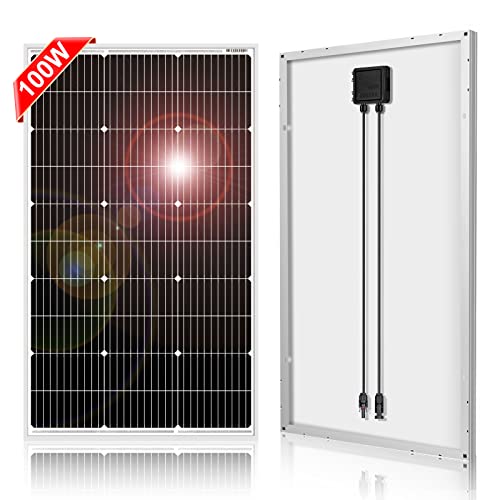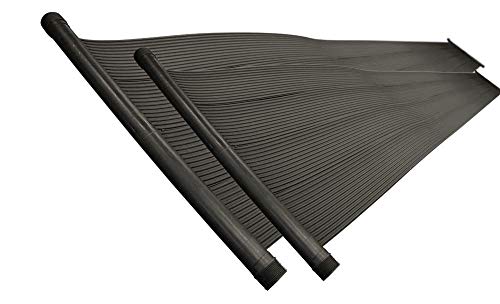In this step-by-step guide, we will take you through the process of integrating renewable energy sources into a hybrid power system. We will start by explaining what a hybrid power system is and why it is beneficial to incorporate renewable energy sources. We will then provide a detailed breakdown of the steps involved in the integration process, including assessing energy needs, selecting suitable renewable energy sources, designing the system, and connecting it to the grid. Additionally, we will discuss the challenges and considerations that come with integrating renewable energy sources into a hybrid power system. By following this guide, you will have a clear understanding of the steps required to successfully integrate renewable energy sources into a hybrid power system.
Top-selling hybrid power system options
Understanding Hybrid Power Systems
In this step, we will explain what a hybrid power system is and how it combines different sources of energy, such as renewable and non-renewable sources. A hybrid power system is a combination of two or more energy sources that work together to provide electricity. By combining renewable and non-renewable sources, a hybrid power system can take advantage of the strengths of each source, providing a more reliable and sustainable energy solution.
To understand hybrid power systems, consider the following points:
- A hybrid power system typically consists of a primary energy source, such as solar or wind power, and a secondary energy source, such as a diesel generator, that acts as a backup or supplementary power supply.
- The primary energy source, which is usually renewable, is prioritized to provide electricity whenever available. This reduces reliance on non-renewable energy sources, decreases carbon emissions, and promotes a greener energy solution.
- When the primary energy source is unable to meet the electricity demand, the secondary energy source seamlessly takes over to ensure a continuous supply of electricity. This ensures reliability in cases of low renewable energy generation or high electricity demand.
The advantages of utilizing renewable energy in hybrid power systems are as follows:
- Reduced environmental impact: By integrating renewable energy sources, such as solar or wind power, with non-renewable sources, hybrid power systems significantly reduce greenhouse gas emissions and contribute to mitigating climate change.
- Increased energy efficiency: Renewable energy sources have the potential to harness natural resources more efficiently, translating into higher energy efficiency and reduced wastage.
- Enhanced energy security: By diversifying the energy mix, hybrid power systems provide a more stable and secure energy supply. They are less susceptible to price fluctuations or disruptions in a single energy source, ensuring a reliable electricity supply.
To optimize the benefits of renewable energy, hybrid power systems offer a compelling solution that invokes a balance between sustainability and reliability.
Assessing Energy Needs
Assessing Energy Needs
- Analyze your current energy consumption: Begin by collecting data on your current energy consumption. This can be done by reviewing your utility bills or using an energy monitoring device. Calculate the average energy usage over a period of time, such as a month or a year. Take note of any fluctuations or seasonal variations in your consumption.For example, if your monthly utility bill shows that you consume an average of 500 kWh per month, you can use this as a baseline for your energy needs.
- Consider peak demand: Determine the highest level of energy consumption you experience during a specific period of time, usually referred to as the peak demand. This is important because it helps you size your hybrid power system to meet your maximum energy requirements.For instance, if you notice that your highest energy usage occurs during the summer months when you use air conditioning, and it reaches 800 kWh, then your hybrid power system should be able to handle this peak demand.
- Analyze load profiles: Assess the time distribution of your energy consumption throughout the day to identify any patterns or fluctuations. This will help you understand when and how much power your hybrid power system needs to provide at different times.As an example, if your load profile shows that the majority of your energy usage occurs in the evenings when you use lighting, appliances, and electronics, you can tailor your hybrid power system to ensure sufficient power supply during those hours.
By following these steps and taking into account factors such as average consumption, peak demand, and load profiles, you will be able to assess your energy needs accurately. This will enable you to determine the capacity required for your hybrid power system, ensuring that it meets your energy requirements efficiently.
Selecting Renewable Energy Sources
- Research: Begin by conducting thorough research on various renewable energy sources such as solar, wind, hydro, and biomass. Utilize online resources, articles, and case studies to gather information about their pros and cons. Understand how each source works, their availability in your location, and their compatibility with your energy requirements.
- Evaluate: Assess the advantages and disadvantages of each renewable energy source. Consider factors such as reliability, efficiency, environmental impact, and cost. Determine whether the source aligns with your energy needs, whether it can be integrated into your hybrid power system effectively, and whether it is suitable for the geographical conditions of your location.
- Compare: Compare the different sources based on your research and evaluation. Look at the strengths and weaknesses of each option, considering factors like energy output, space requirements, maintenance needs, and variability. Take note of any additional equipment or infrastructure that may be necessary for each source.
- Choose: Based on your research, evaluation, and comparison, make an informed decision on which renewable energy sources are most suitable for your hybrid power system. Consider factors such as reliability, cost-effectiveness, long-term savings, and environmental impact. Select the combination of sources that best meets your energy requirements and aligns with your goals for sustainability.
By following these steps, you will be well-equipped to explore, evaluate, compare, and ultimately choose the most appropriate renewable energy sources for your hybrid power system. Remember to consider the specific conditions and needs of your location, as well as the long-term impact of your decision.
Designing the System
Here, we will delve into the technical aspects of designing your hybrid power system. To start, consider the configuration of your system. Determine whether you want a grid-tied or off-grid system, as this will influence the types of components you will need. Next, select the appropriate components for your system. This includes choosing the best combination of solar panels, wind turbines, batteries, and inverters. Consider factors such as brand reputation, efficiency ratings, and compatibility to ensure optimal performance.
Once you have selected your components, you will need to size your renewable energy generation and storage. Calculate your energy needs by examining your daily electricity consumption. This will help you determine the appropriate capacity for your solar panels and wind turbines. Additionally, choose the right size and number of batteries to store excess energy for use during periods of low generation.
Throughout the entire design process, it is important to consider factors like system efficiency, reliability, and cost-effectiveness. Optimize the performance of your system by maximizing energy production and minimizing energy losses. Prioritize the selection of high-quality, reliable equipment to ensure your system operates efficiently. Lastly, assess the overall cost of your system, taking into account the initial investment as well as long-term maintenance and operation expenses. By carefully considering these technical aspects, you can design a hybrid power system that meets your energy needs efficiently and cost-effectively.
Installation and Monitoring
In the final step, we will guide you through the installation process and provide tips for effective monitoring and maintenance of your hybrid power system. To begin, make sure you have all the necessary components for installation, such as solar panels, batteries, and an inverter. Start by mounting the solar panels on a sturdy structure, ensuring they are positioned to receive maximum sunlight. Connect the solar panels to the charge controller, which regulates the flow of electricity to the batteries. Then, connect the batteries to the inverter, which converts the stored energy into usable AC power for your electrical appliances.
Once the installation is complete, monitoring and maintenance are crucial for optimal system performance and longevity. Regular inspections are necessary to identify any issues or damages that may affect the system’s efficiency. Inspect the solar panels for any signs of shading, dirt, or damage, and clean them with a soft brush or cloth if needed. Check the integrity of the battery connections and ensure they are secure and free from corrosion. Additionally, regularly monitor the system’s performance through the inverter’s monitoring interface or a separate monitoring device. This allows you to track energy production, battery capacity, and overall system health.
In terms of troubleshooting, it’s important to be familiar with common issues and their possible solutions. For example, if your system experiences a sudden drop in energy production, it could be due to shading on the solar panels. In this case, you may need to adjust the panel positioning or trim surrounding foliage. If your batteries are not charging properly, check for loose connections or contact a professional for further assistance. By staying proactive with regular inspections, performance monitoring, and troubleshooting, you can ensure that your hybrid power system continues to operate efficiently and reliably for years to come.
Key Takeaways
Conclusion:
In conclusion, we have explored the process of integrating renewable energy sources into a hybrid power system in this blog post. By following the outlined steps, you can successfully incorporate clean and sustainable energy into your power system while maintaining reliability and efficiency. The adoption of renewable sources in a hybrid system is crucial in our journey towards a more environmentally friendly future.








![[Upgraded] 30A Solar Charge Controller, 12V/ 24V Solar Panel Regulator with Adjustable LCD Display Dual USB Port Timer Setting PWM Auto Parameter](https://m.media-amazon.com/images/I/718bY06VqyL._SS520_.jpg)










